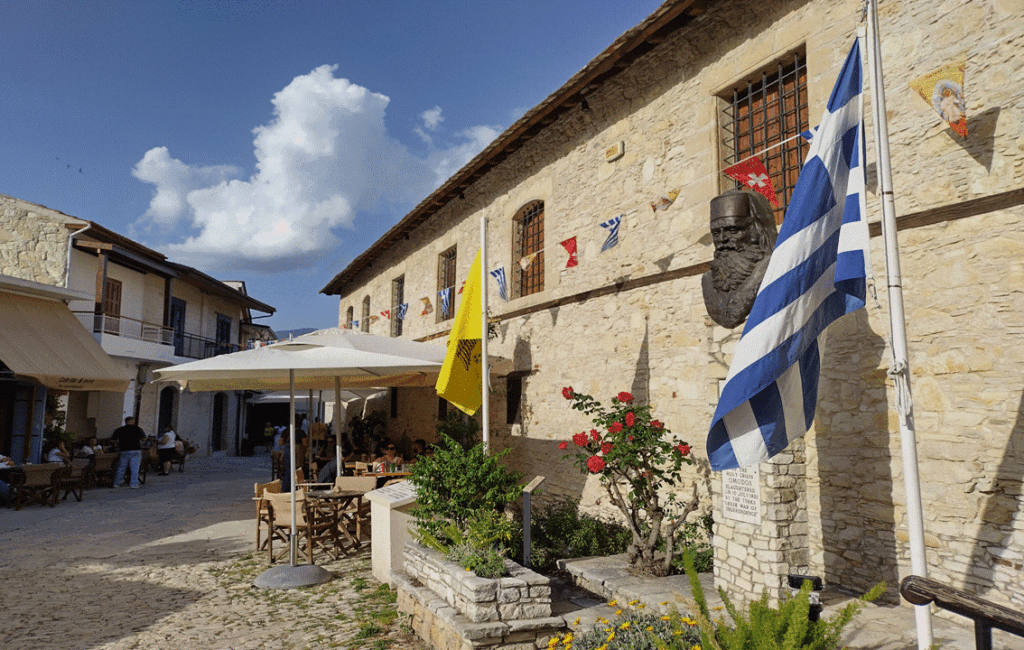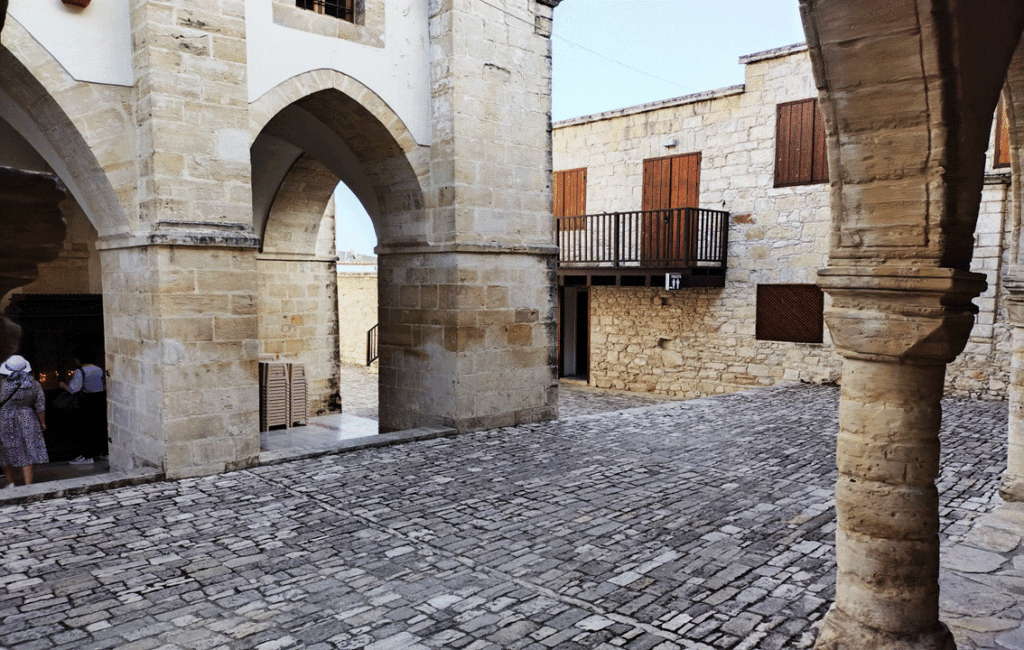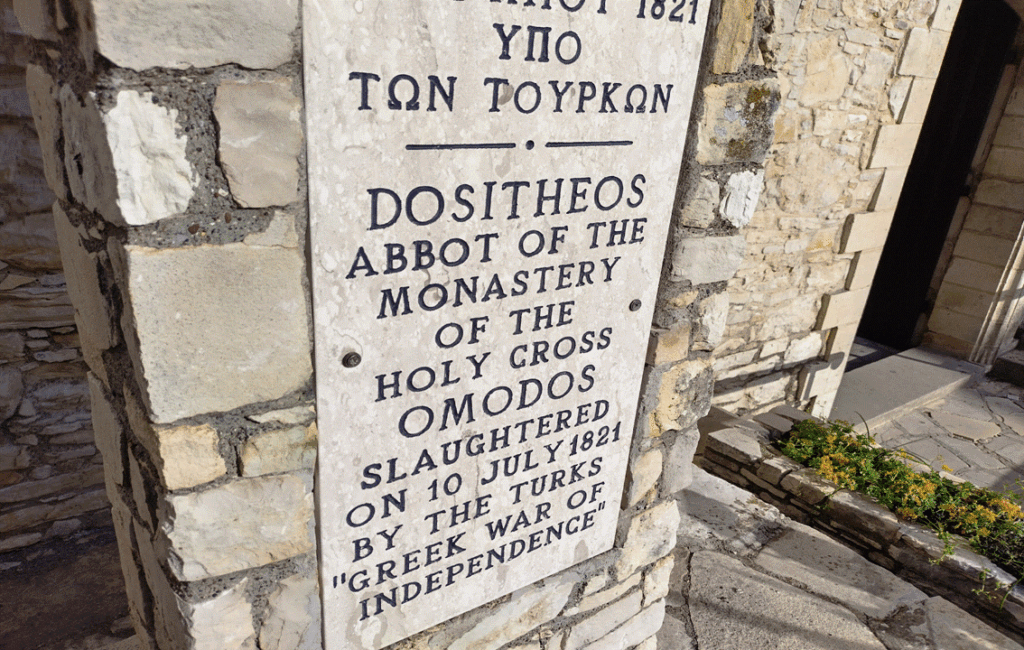
A MONASTERY IN THE MOUNTAINS
By Irene Charalambous
A PERFECT BACKDROP FOR BOTH CONTEMPLATION & PRAYER
A TESTAMENT TO THE ISLAND'S RICH HERITAGE
The Monastery of the Holy Cross in the village of Omodos, within the district of Limassol, stands as a testament to the island’s rich history and spiritual heritage. Exemplified by the role it has played in the local affairs of the village over the centuries, the monastery has a profound historical significance. Founded by Saint Helena, mother of Constantine the Great, the monastery, which borders the main square of the village, houses a fragment of the true cross.
A SERENE LANDARK
Steeped in history, the village of Omodos, in the foothills of the Troodos Mountains, has a beautiful rustic feel. Easy on the eye, my journey there took me through some lovely elevated mountain roads. This allowed me to take in some stunning scenery along the way. On arrival, I immediately noticed the monastery’s imposing structure. I found that this creates a serene landmark for this otherwise picturesque village in the mountains.



A REVERED RELIC
My visit to the monastery of the holy cross, which has a history dating back to the 12th century, was truly outstanding. It was first established on the outskirts of the village by Saint Helena, who, along with some monks, sought a place for spiritual reflection in solitude. After its construction, it became the home to a relic of the true cross. This revered relic has attracted pilgrims to the site from all over the world. It is said to possess miraculous healing powers, and several accounts of healing are attributed to it. Several visitors to the monastery today often seek blessings and spiritual enlightenment from it. The monastery also stands as a beacon for the Greek Orthodox Church on the island. It often becomes a central hub of activity and celebration during several Orthodox religious events and festivals.


A HUB OF ACTIVITY & CELEBRATION
The Monastery of the Holy Cross is not only a historical site but also an important spiritual centre. The monastery acts as a place for worship, reflection, and a connection with God. It has also had a significant cultural impact on the local village. The monastery fosters a sense of pride among residents, and it has helped to shape the identity of the local area. Annual celebrations, held in honour of the Holy Cross, attract visitors from all over the island.
GOTHIC STONE WALLS
Characterised by its gothic stone walls and arches, the monastery has an impressive façade. I found the interior to be equally captivating. I was greatly impressed by several of the frescoes that adorn its inner sanctuary. Some of these, I was told, date back to the 16th century. The main icon includes scenes depicting the life of Christ and the Virgin Mary. I also had the opportunity to admire the beautiful wooden iconostasis. This is adorned with intricate icons depicting various saints and biblical scenes.
A PERFECT BACKDROP FOR CONTEMPLATION & PRAYER
I also witnessed a service conducted by the resident Orthodox priests. The chanting of Greek Orthodox hymns and the scent of incense seemed to attract a large attendance. This created an atmosphere of reverence and religious devotion that I fully embraced. This allowed me to appreciate the peaceful setting that provides a perfect backdrop for contemplation and prayer.


A LITTLE EXPLORATION
After the service, I decided to explore this quaint little village in the mountains a little more. As I walked down the cobblestone roads, lined with charming stone houses, it was easy to see how this village has become a popular tourist attraction. It is also known for its traditional winemaking and handicrafts, and it has some lovely, authentic local taverns. One such establishment is the MAKRINARI TAVERN, which was in full swing with live music and people dancing and singing. I then followed the road around full circle, and I soon found myself back at the pedestrianised main square. After visiting some of the shops, I decided to sit for a while opposite the monastery at one of the coffee shops. After ordering an ice-cold FRAPPE, I then sat back listening to the constant sound of distinct chatter in the background.


A SYMBOL OF RESILIENCE, FAITH & COMMUNITY
The Monastery of the Holy Cross deserves its recognition and reverence for its enduring legacy. My visit was a profound experience that deepened my appreciation for the history and spirituality that exist in Cyprus. This monastery stands as a symbol of resilience, faith, and community, and it invites all who visit to reflect on their spiritual journey. As I left, I carried with me not only memories of the beautiful architecture and peaceful surroundings but also a sense of connection to the history and faith that the monastery represents.



